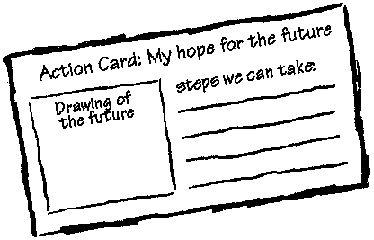
(levels 3-6)

- To develop a profile of the local community and its
environment.
- To recognize the linkages between environment and
human well-being.
- To express hopes for the future and to find simple
and concrete means to achieve them.


Students develop a profile of their community. What are the
factors that make it a distinct community (aspects of the natural
and built environment, the way of life of the people, etcetera)?
Why is it a good place to live? Is there anything that could be
improved?

In groups, students will choose one of the suggested improvements
and undertake an investigation to prepare a report on the present
situation.
Each group will become a reporter team to investigate their topic
in the immediate neighbourhood. For example "the school yard could
be improved by tree planting". Students can use reporter cards
suggested above and illustrate the situation with simple pictures
or use videos and tape recorders to illustrate and support their
findings.


Each reporter team presents their report to the entire class for
discussion.
As a class, the students chose one or more situations which they
would like to see improved.

Students brainstorm ideas about what they can do individually or
as a group to improve the situation. Students can use the action
card illustrated below to identify changes in actions, behaviours
and attitudes. Students can use drawings, paintings, poetry to
describe and illustrate a vision of the future in which the
situation has been changed.

Students could make a small booklet with the cards to distribute
to other students and teachers, parents and the community, or a
poster display for libraries and stores.
Students could conduct an awareness campaign dealing with the
problems which are having an impact on the natural and human
environment.
Students could develop means of reporting on-going action taken,
e.g. a bulletin board, small newsletter, etcetera. Remember to
disseminate the results on the Canadian SchoolNet (see page
22).






